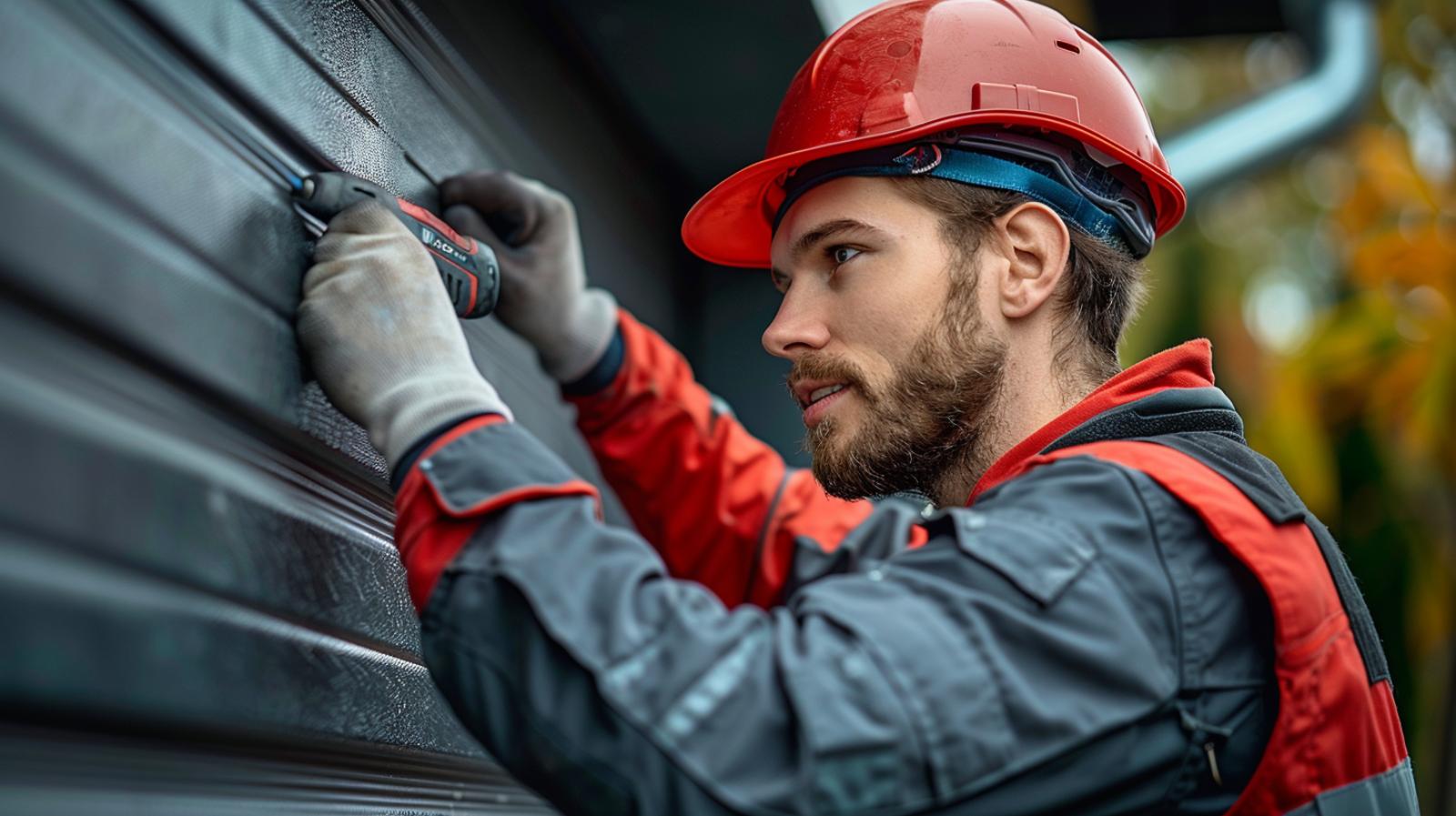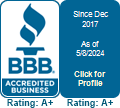
Contents
Keep your garage door operating smoothly by lubricating parts regularly. Prevent wear and tear, extend lifespan, and enhance durability with proper lubrication. Choose silicone-based for metal components and lithium-based for hinges and rollers. Clean parts well, apply lubricant accurately and avoid over-lubrication. Focus on spring tension, hinges, and essential moving parts. Set a maintenance routine, checking for loose parts every three months, using silicone lubricant. Inspect weatherstripping biannually and schedule an annual professional service. Master lubricating techniques for best performance and safety. Your garage door will thank you with long-lasting functionality and minimal repairs necessary.
Key Takeaways
- Choose appropriate lubricants for specific parts to ensure optimal performance.
- Clean parts thoroughly before applying lubricant to prevent debris buildup.
- Follow the manufacturer’s recommendations for lubricant type and application frequency.
- Focus on essential components like springs, hinges, and rollers for smooth operation.
- Establish a regular maintenance schedule to prolong the lifespan of garage door parts.
Importance of Lubricating Garage Door Parts
To guarantee smooth operation and extend the lifespan of your garage door, regularly lubricating its parts is essential. By doing so, you guarantee that the various components of your garage door move effortlessly, preventing wear and tear that could lead to costly repairs down the line. Taking the time to lubricate the hinges, rollers, tracks, and springs of your garage door won’t only keep it running smoothly but will also provide long-term benefits by increasing its durability.
Preventing wear on your garage door parts is crucial for maintaining its functionality and safety. When these components aren’t properly lubricated, friction can occur, causing them to wear out faster. This wear and tear not only affect the performance of your garage door but can also pose a safety hazard if left unchecked. By lubricating your garage door regularly, you’re taking proactive steps to prevent this wear, ensuring that your door continues to operate smoothly and efficiently.
Regularly lubricating your garage door parts is a simple yet effective way to ensure that your door remains in top condition for years to come. Not only does it provide immediate benefits in terms of smoother operation, but it also offers long-term advantages by preventing wear and extending the lifespan of your garage door.
Choosing the Right Lubricant
Selecting the appropriate lubricant for your garage door is vital to ensure peak performance and longevity of its components. When it comes to types of lubricants, you have a few options to ponder. Silicone-based lubricants are excellent for metal-to-metal applications, providing long-lasting lubrication and protection against rust and corrosion. Conversely, lithium-based greases are perfect for hinges and rollers, offering exceptional lubrication and water resistance.
Regarding application methods, it’s important to apply the lubricant accurately to achieve optimal performance. For hinges and rollers, a small amount of lubricant applied directly to the moving parts is typically enough. Remember to remove any excess to prevent buildup and accumulation of debris. Furthermore, for springs and tracks, a light coating of lubricant can help minimize friction and noise.
Step-by-Step Lubrication Guide
When lubricating your garage door parts, ensure proper application by following a step-by-step guide for peak performance and longevity.
Start by cleaning the parts thoroughly to remove any dust or debris that could affect the lubrication process. Use a mild detergent and water to wipe down the tracks, rollers, hinges, and springs. Once clean, guarantee all parts are dry before proceeding with the lubrication.
Next, apply the lubricant using the appropriate techniques. Use a silicone-based lubricant for the rollers, hinges, and springs, while lithium-based grease works best for the tracks. Apply a small amount of lubricant to each part, being careful not to overdo it. Excess lubricant can attract dirt and grime, leading to potential issues down the line.
Common mistakes to avoid include using the wrong type of lubricant, applying too much or too little lubricant, and neglecting certain parts of the garage door mechanism. Make sure to follow the manufacturer’s recommendations for the type of lubricant to use and how frequently to apply it.
Areas to Focus on When Lubricating
Focus on lubricating the essential moving parts of your garage door to ensure smooth operation and prevent premature wear and tear. Two key areas to focus on when lubricating your garage door are spring tension and hinge maintenance.
Firstly, pay close attention to the spring tension. The springs are vital components that bear the weight of the garage door as it opens and closes. Applying lubricant to the springs helps reduce friction, allowing them to function properly and extend their lifespan. Make sure to coat the springs evenly with lubricant, but be cautious as these springs are under high tension and can be dangerous if mishandled.
Secondly, don’t overlook hinge maintenance. The hinges are what allow the sections of the garage door to bend as it moves along the track. Lubricating the hinges ensures that they can move freely without getting stuck or causing unnecessary strain on the door opener. Apply lubricant to both the hinge pins and the areas where the hinges bend to keep them in top condition.
Regular Maintenance Schedule
To safeguard the longevity and peak performance of your garage door, setting up a consistent maintenance schedule is vital. By adhering to a regular maintenance routine, you can prevent rust from forming on important components and guarantee that your garage door operates smoothly for an extended period.
Begin by inspecting the garage door hardware every three months. Tighten any loose bolts or screws to prevent unnecessary vibrations that could lead to wear and tear. Additionally, check the springs, cables, and rollers for any signs of damage or wear. Lubricate these parts with a silicone-based lubricant to keep them functioning correctly and to extend their lifespan.
Every six months, examine the weatherstripping around the door to make sure it’s still providing a tight seal. Replace any worn weatherstripping to prevent moisture from seeping in and causing rust to develop on metal parts. Inspect the tracks for debris or buildup that could affect the door’s movement. Clean the tracks thoroughly and lubricate them to prevent friction.
Once a year, it’s essential to schedule a professional maintenance service. A professional technician can perform a thorough inspection of all components, make any necessary adjustments, and make sure that your garage door is in top condition. Following this regular maintenance schedule won’t only prevent rust but also extend the lifespan of your garage door, providing you with peace of mind and a smoothly functioning door for years to come.
Review
Don’t forget to regularly lubricate your garage door parts to keep them running smoothly and quietly.
Just like a well-oiled machine, your garage door will operate efficiently with the right lubricant and maintenance routine.
So, take the time to care for your garage door components to avoid costly repairs and make certain they last for years to come.
Happy lubricating!
Recent Posts
Top 5 DIY Garage Door Maintenance Tips
Your garage door is like the gatekeeper to your home, and keeping it in top
Reliable Signs Your Overhead Door Requires Attention
Many homeowners overlook the subtle signs that indicate their overhead door needs attention. Unusual noises
3 Key Tips for Garage Door Care
Picture your garage door gliding smoothly, a seamless entry into your home. To achieve this,

